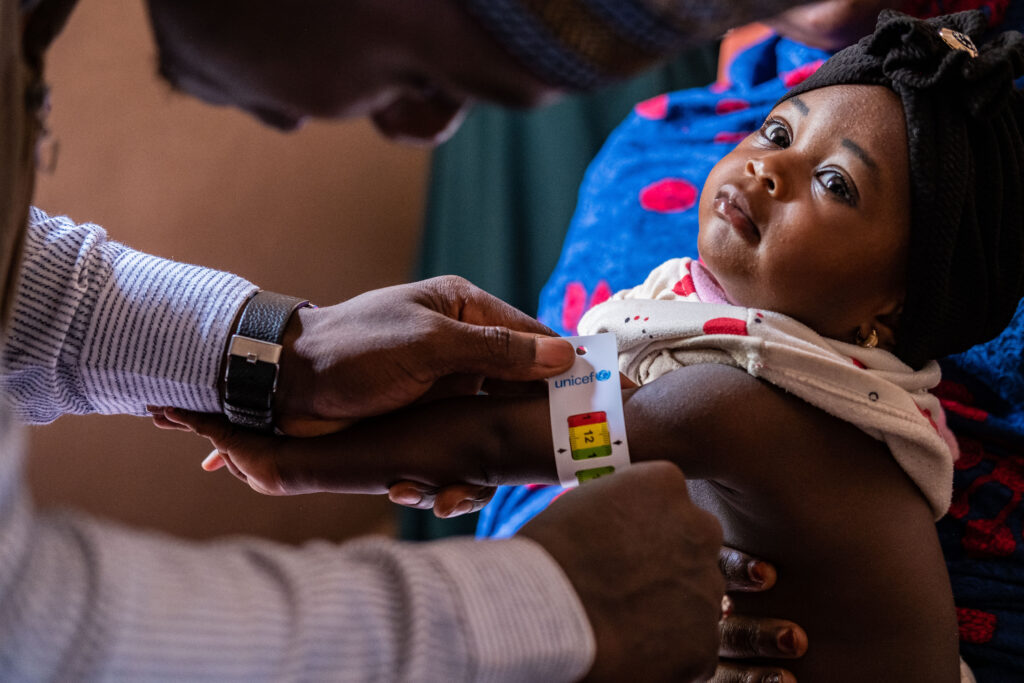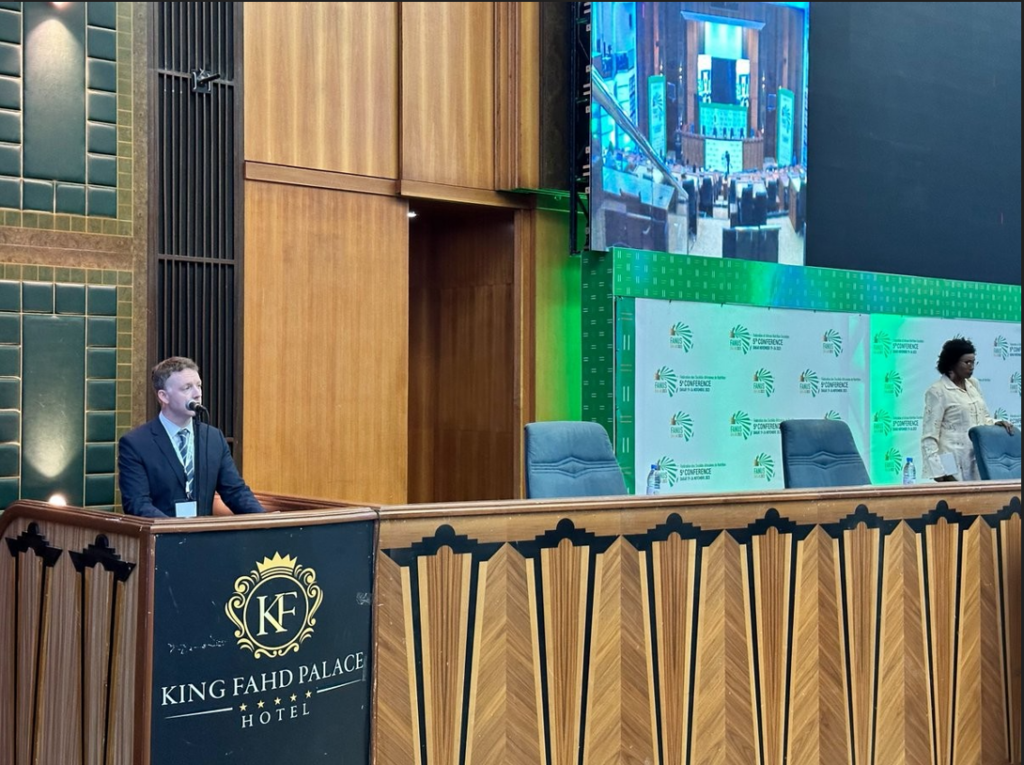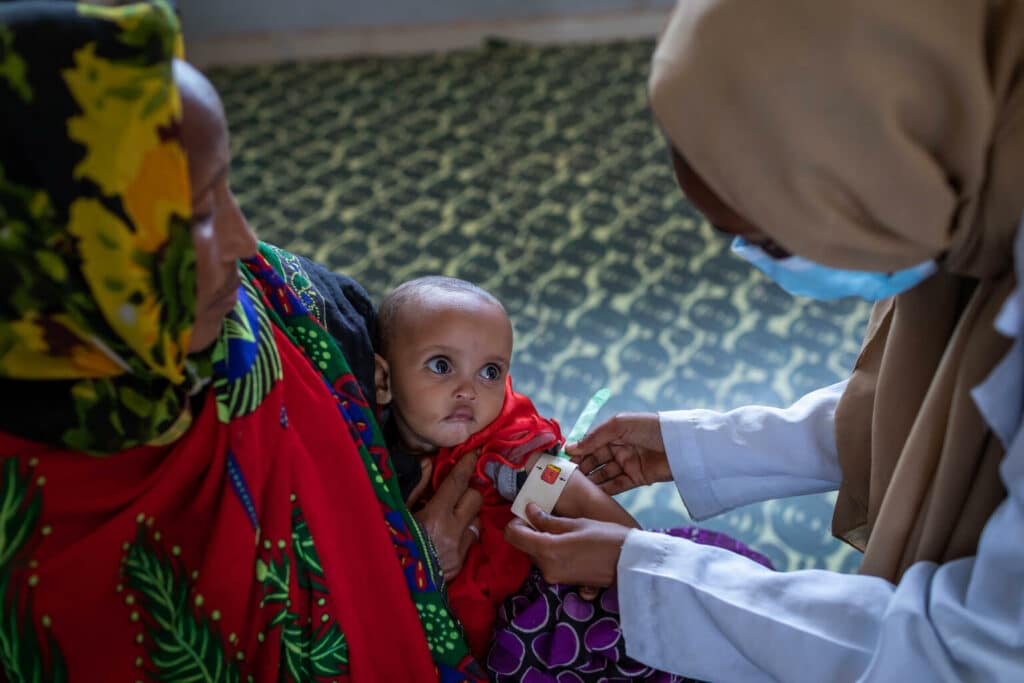The Eleanor Crook Foundation joins advocacy and technical nutrition groups and experts in releasing Nourish the Future, an evidence-based five-year plan for the U.S. Government to scale up the most lifesaving nutrition interventions in the hardest-hit countries.
The proposal emphasizes that health and food systems—the two main vehicles for combating malnutrition—must work in harmony for impacts to be sustainable. Currently, these two systems operate in silos and have failed to consistently prioritize and scale high-impact nutrition interventions.
Nourish the Future proposes changing that by linking and strengthening global health and food systems, which would cut severe malnutrition in focus countries in half.
How will implementing the Nourish the Future plan make a difference?
Implementing Nourish the Future will save two million lives, while markedly improving life for at least 500 million women and children. Developed in consultation with more than 100 nutrition, health, and agriculture experts, this plan would reduce severe malnutrition in focus countries by up to 50 percent and reduce child deaths in those countries by up to 11 percent. This would be one of the most dramatic global reductions in child deaths since 1990. By investing $887 million per year—less than one-third of the amount Americans spend annually on Halloween candy—the United States could lead the next chapter of the child survival revolution, improve the school performance of 18 million children, and generate a minimum of $56 billion in economic returns by saving lives and improving brain development and productivity.
“Over the past two decades, the world has reduced the proportion of children suffering from undernutrition by one third, and the number of undernourished children by an astonishing 55 million,” UNICEF Executive Director Henrietta Fore shared, “This proves that progress is possible. However, a toxic combination of rising poverty, conflict, climate change and COVID-19 are risking a backwards slide. Solutions to prevent, detect and treat child malnutrition are proven and well known. Nourish the Future provides a visionary and actionable roadmap to take these solutions to scale, get back on track, and end malnutrition for good.”
The two pillars of changes will be achieved through:
- Improving nutrition through health systems. Johns Hopkins University has identified four health systems interventions—collectively known as the “Power 4”—as the most cost-effective tools available to combat deadly malnutrition. Nourish the Future proposes scaling up the Power 4 in nine USAID countries, as well as scaling up the global production of ready-to-use therapeutic food (RUTF).
- Improving nutrition through food systems. Nourish the Future would scale up the production of diverse, nutritious foods in low- and middle-income countries. This would include more biofortified and drought-resistant crops, the reduction of food loss, and improved food safety. It would also scale up large scale food fortification to enrich processed staple foods with essential vitamins and minerals. In places where nutritious food is unavailable or unaffordable, Nourish the Future would support the World Food Programme and other stakeholders to distribute lipid-based nutrient supplements (LNS) as part of USAID’s food basket, preventing malnutrition, averting stunting, and reducing young children’s risk of mortality.
“No child should die from malnutrition when we have the tools to stop it. Affordable, effective solutions have long existed but are still waiting to be deployed. We can do so much more,” Eleanor Crook Foundation CEO Will Moore says. “COVID-19 has underscored that we need a safety net below which no human on earth should be able to fall and Nourish the Future is a smart plan that can provide just that.”
In 2020, only $150 million of U.S. global health investments were allocated to prevent and treat malnutrition—just 0.4 percent of overall U.S. foreign assistance. Immense global underinvestment in the most proven solutions for preventing malnutrition has led to abysmally low rates of coverage, even as coverage of other complementary health services has increased.
An initiative to fight global malnutrition would not only revive the child survival revolution and preserve the health, brain function, and lifelong potential of millions of girls and boys, it would also directly address each of the “four crises” articulated by the Biden administration. It would fortify the global response to COVID-19, therefore saving lives in the short run and improving future pandemic preparedness. It would boost economies and build “gray-matter infrastructure” by improving cognitive development, education, and lifetime earnings. It would drive a just and equitable response to climate change, which is exacerbating malnutrition across vulnerable populations, particularly female small shareholder farmers and their families. And it would address global inequality, as nearly all cases of severe malnutrition occur in Africa, Asia, and South America and are concentrated within marginalized communities in those regions.
Nourish the Future – helping to restore human dignity by putting healthier food on millions of tables
Nourish the Future builds off of decades of strong bipartisan U.S. leadership on global hunger and malnutrition—including President Obama’s bipartisan Feed the Future initiative and, most recently, the Global Nutrition Resolutions that passed with an overwhelming majority in both houses of Congress last year. Nourish the Future is an ambitious effort that Republicans and Democrats could achieve together—one that all Americans could be proud of.
Eliminating severe hunger and malnutrition would be an unparalleled advancement in the fight for universal human dignity. Delivering lifesaving new child health services and putting healthier food on millions of tables would build goodwill across allied countries in Africa and Asia for generations. But this will require renewed investment, energy, and optimism from the global community, especially from the most affected countries. And it is an effort that the United States is uniquely placed to catalyze.
As President Biden said on his inauguration day: “Ending hunger and malnutrition at home and around the world is consequential. If we do nothing today, food insecurity will loom as an even larger and bigger threat tomorrow. You’re fostering a world that is more just and peaceful.”
Want to join us in the fight against global malnutrition? Sign on as a Nourish the Future supporter here.
ATTRIBUTIONS
Image 1 – © UNICEF/Nyan Zay Htet





